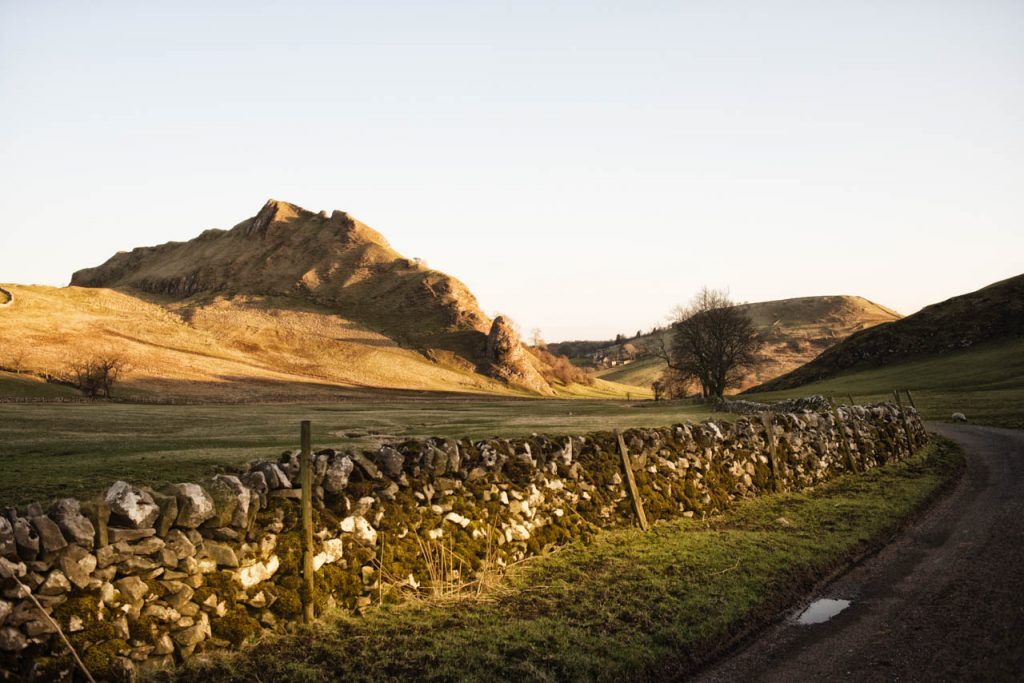
The geology of the Peak District is what makes it such a diverse and beautiful land. Split in half between the limestone outcrops of the white peak and the spectacular gritstone edges of the dark peak, the geology underneath the soil is a very fascinating tale to tell.
Around 340 million years ago the area which we now call the Peak District was actually covered by a clear, warm, shallow sea full of microscopic shelled creatures. There were beds of animals related to the Starfish, walking over coral reefs and beds of other shellfish, some of which were similar to modern cockles. They deposited thick calcium deposits up to a depth of 600 m in places and some have eroded in strange formations like the ancient coral reefs around Chrome Hill.
As the deposits were laid down, the seabed gradually sank and this is now the rock which is known as Carboniferous Limestone, which lies under the entire expanse of the Peak District. The sea was also a centre of volcanic activity occasionally and undersea volcanoes would pour lava across the seabed, injecting it into the gaps of compressed fossils. The lava cooled to form layers of basalt which is known locally as toad stone.
Conditions changed from about 300 million years ago as the sea became more shallow and large rivers from nearby continents to the North began to drain into the sea and deposit the silt which gradually compressed to form the rocks. The shale and rock layers can clearly be seen in the spectacular Mam Tor. Later, the deposits were very course with large lumps of gravel, which laid down thick layers of sediment, much harder rock, to form millstone grit as can be seen at Stanage.
As the land formed and the sea filled in completely, it became richly vegetated with trees and huge ferns. However, with rivers constantly shifting and landslips occurring, these also became covered in water and laid down another series of shale and vegetable deposits known as the Coal Measures.
This era of rock formation is known as the Carboniferous period and lasted 65 million years and after that, the area was subjected to massive earth movements which raised the rocks of the area in the North South line, which resulted in the domelike shape of the Peak District we know today. The rocks were worn away until even the limestone beneath was exposed but then the earth’s crust sank and the whole region was covered by sea, which then deposited a whole range of new rocks over it.
During this period the rock often cracked under the pressure and the molten rock was forced into the holes which was often rich in minerals such as Fluorspar and calcite, which crystallised as the magma slowly cooled. Many mineral veins were made and were found in the limestone areas which have been mined or lead since Roman times.
Massive earth movements were raised again and most of the Peak District rocks were eroded at the start of the Caenozoic era. During this time the rivers continued to change course and flow in new directions until the Ice Age arrived from 100,000 years ago to 10,000 years ago, when most of the Peak was covered by thick layers of ice, which scooped out the hollows in the rock underneath. This is when our caves and caverns occurred with the melt waters from the glaciers and herds of wild animals roamed the area with their remains found in many of the caves. Buxton Museum has a fine collection of these.
The Peak District today is diverse in its landscape, where the rivers have been able to carved deep, narrow valleys and have found their route underground, leaving dry valleys above and caverns below. Where the caves have collapsed, they leave a deep, narrow gorges as at Cave Dale and Winnat’s Pass at Castleton. Millstone grit is insoluble and porous and absorbs the water which often seeps through the stone until it meets the less porous shale beneath when springs emerge. This grit is less hard than limestone and is vulnerable to landslips, so the rivers have worn much wider valleys in areas of the dark peak. The edges that have been left behind are truly remarkable and unique to the Peak District.